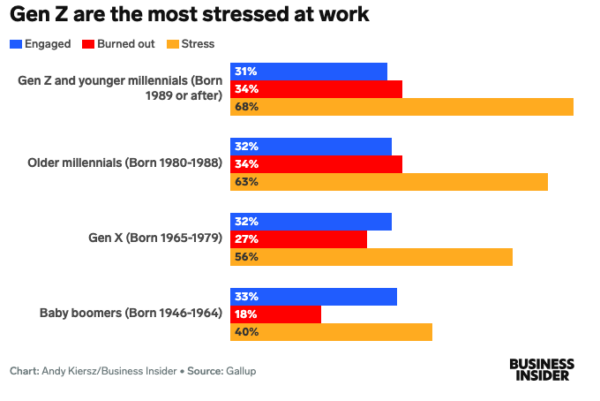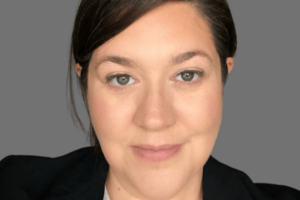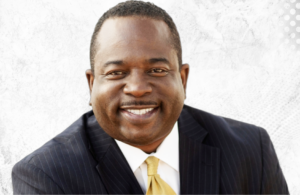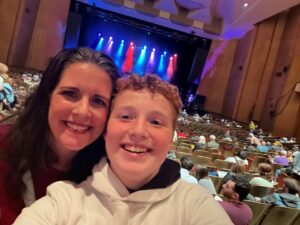Communicators can help Gen Z address workplace anxiety. Here’s how.
What can communicators do to help the newest generation in the workforce adjust?

As 2023 nears its close and we get ready to embark upon another year, there’s a lot for communicators to consider. What new trends and issues lie on the horizon for comms pros? Where will communicators focus their energy next year, as so many did on AI in 2023?
As time goes on, you must also consider the new generations that will inevitably enter the workforce. What talents, habits and tendencies will they bring with them? In addition to fresh perspectives on the world of work, Gen Z is bringing something else to their jobs with them every day — the weight of workplace anxiety.
According to a Gallup report, Gen Z (and millennial workers born after 1989) workers report the most stress at work. With Gen Z slated to make up over a quarter of the workforce by 2025, this bears paying attention to.
These stats appear to be spilling over into the world of work in tangible fashion. One manager who identified as a millennial shared an anecdote in a piece for Business Insider that encapsulated the fallout of this anxiety in action, saying that one of their Gen Z reports overshared about their feelings on the job.
“On the one hand, I applaud his willingness to share how he feels, and I marvel at how comfortable he is in saying what he thinks,” she said about one of her reports. “But on the other hand, as a boss, it’s not my job to help him work through all his feelings — only the ones related to work.”
This quote illuminates the generational differences that manifest themselves in the workplace. The best way that communications leaders can address this is through \ bridge building — different generations have different styles and preferences when it comes to communicating, and you can help increase dialogue between generations for a more positive, productive workplace.
Building connections
When setting out to foster intergenerational interaction, comms first needs to recognize that there are five distinct age groups in the workplace, all with differing communication styles. They are:
- The Silent Generation
- Boomers
- Gen X
- Millenials
- Gen Z
At Ragan’s Future of Communications Conference in Austin this November, IMF Deputy division Chief of Internal Communications Karla Chaman and FleishmanHillard SVP and Partner Kathryn Chappell shared how comms can break through to each generation, even when the lines between them might seem a little blurry.
Chappell stated that Gen Z has only been in the workforce for 3-5 years, and between the pandemic upending the way we work and the state of the world at large, those years have been rife with sources of conflict and stress. Looking back to the Gallup data, there’s a potential root cause in younger workers right there.
Bridging the gap
If Gen Z workers are showing signs of anxiety within their roles, point them in the direction of resources that can help them. Younger generations are especially attuned to the fact that workplace stresses don’t always just stop when you shut your work computer for the day — comms needs to recognize and act on that within a messaging and content strategy. That can manifest in several ways, including:
- Creating opportunities for intergenerational connection
- Allow younger members of an organization to be heard
- Allow for reverse mentoring, in which younger employees share their experiences with older ones
- Ask members of Gen Z about how their experiences of culture can help tell the organizational story
The more you allow Gen Z employees to tell their stories, the more likely they are to feel like a part of the larger organizational mission.
The bigger picture
As new generations enter and become more comfortable in the workplace, so too must the comms strategy to ensure that relevant messaging is resonating with them.
Creating a sense of cultural unity will not only make a communicator’s job easier but can help those feeling anxious or isolated feel like they’re a part of something larger than themselves.
Generational gaps might seem like obstacles at first, but if you drill down and get to develop and understand the people behind them, you can serve as a conduit to help each generation fulfill its highest potential.
Sean Devlin is an editor at Ragan Communications. In his spare time he enjoys Philly sports, a good pint and ’90s trivia night.








